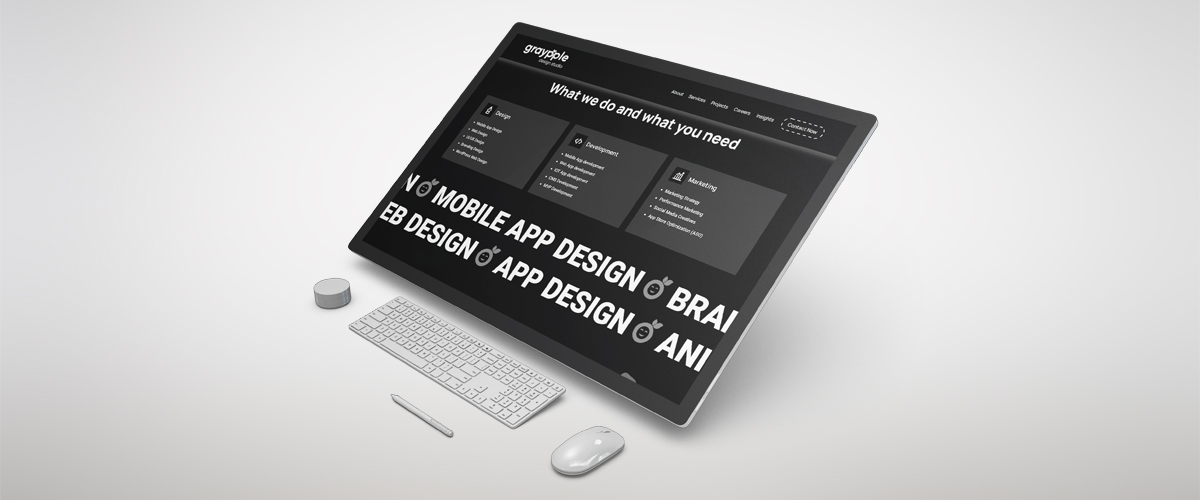Users are prominently requesting dark themes over recent years. Both Apple and Google have used a dark theme as a fundamental user interface (UI) component. The use of a dark theme, characterized by its lowered brightness, enhances safety in low-light conditions and mitigates eye strain.

There is a significant focus on using dark background colors in conjunction with a bright foreground. Frequently, it involves using light-coloured textual elements juxtaposed against a dark or black backdrop.
Dark Mode has gained popularity recently, however, the design has existed for a long time. The first monitors had a mostly dark color scheme, a feature that persisted until the advent of color displays. In contemporary times, all electronic gadgets having a visual interface provided the option of a dark mode. Dark mode is available on several devices and platforms, such as smartphones, television screens, and applications.
Advantages of Dark Mode
Reduced Eye strain and fatigue
Dark mode can alleviate eye strain and tiredness, particularly while operating in environments with limited light. White backdrops have a higher luminance, resulting in more light emission, which might cause eye discomfort, particularly during prolonged use of electronic devices. The use of dark mode reduces contrast, enhancing the comfort of the viewing experience.
Enhanced Battery Longevity (for OLED Displays)
Using dark mode on devices with OLED panels can help improve battery life. OLED displays can independently illuminate each pixel, allowing for a reduction in the number of active pixels. This results in lower power consumption and improved battery efficiency.
Emphasis on Content
Dark mode may effectively enhance the emphasis on information by reducing the distractions in the background. Dark mode enhances the user’s ability to focus on the core material by reducing visual distractions, leading to enhanced reading and comprehension.
Visual Hierarchy and Focus
The dark mode may effectively boost visual hierarchy by creating a contrasting effect that enables brighter components and text to stand out against the dark backdrop. By using this technique, designers can effectively guide the user’s attention toward certain areas. Thus, it enhances user experience by making it more captivating.
Aesthetic Appeal and Personalization
Dark mode is popular because it looks sleek and modern. Many people like it because it allows for more personalization. Thus, users can customize the look as per their choice. The dark mode also gives a sophisticated look to the digital solutions.
Drawbacks of Dark Mode
Challenges in Accessibility
Dark mode may look good, but it can be hard to read for people with visual impairments or medical conditions like color blindness or astigmatism. Certain people may have challenges while reading text with a bright hue against a black backdrop, resulting in decreased accessibility.
Design and Branding Constraints
Adding dark mode can create design and branding challenges when designing the UI/UX for an application or website. Not all color schemes and design elements work well with a dark mode. This can limit the overall design and branding of an application or website. Some businesses may need to ensure that their visual elements and color schemes remain consistent even when moving to a dark mode design, as certain colors and design components may not work well within this color scheme.
Readability Challenges in Dark Mode
Although dark mode can improve readability in some situations, it may present difficulties, particularly regarding lengthy written material or programs relying on textual elements. The legibility of light writing on a dark backdrop may be compromised, especially for those with vision impairments or astigmatism. Certain individuals may have difficulty sustaining concentration and ensuring coherence over prolonged durations.
Limited Compatibility
Not all platforms, operating systems, or apps may work with dark mode. The feature requires extra time and effort from developers, which limits its accessibility and usefulness for consumers.
Aesthetic Incongruity
While implementing dark mode may offer a modern and visually pleasing look, it may not always align with an application’s visual branding or design. Neglecting pre-existing design components can lead to an inconsistent user experience that causes confusion and a lack of visual coherence.
Essential Techniques to create a dark theme
Avoid Pure Colors
When implementing a dark theme, it’s not necessary to use stark white text against a black background. This can cause discomfort due to the high contrast. An example of pure white (#FFFFFF) and black (#000000).
Instead, it’s better to use shades of dark gray and light gray for text and background. This will create a distinct brand identity even when in dark mode and reduce eye strain for users.
Choosing a range of dark gray shades is advisable instead of pure black. When using the color white, choosing a light gray shade is advisable. There are many gray shades from which one may choose a suitable option to establish a distinct brand identity, even while operating in dark mode.
Avoid using saturated colors on dark themes
Saturated colors when used on light surfaces provide pleasing results. However, when applied to dark surfaces, the same colors can be hard to read. To enhance the contrast against a dark surface, it is recommended to desaturate primary colors.
Choosing lighter tones, namely hues within the range of 200 to 50, is recommended, as they provide enhanced legibility when shown on surfaces with dark themes. Lighter variations of the user interface assist in maintaining suitable contrast levels.
To make sure everything is easy to read, it’s better to use lighter colors on dark backgrounds. This will make sure that the text is easily readable and doesn’t cause eye strain.
Keep your brand’s personality
When it comes to the emotional response of users, it’s natural to expect that the light UI would evoke similar emotions in users as the dark theme. However, the dark theme has the potential to elicit entirely different emotions in users. That’s why it’s important to align the tone of our brand with the dark theme to create a harmonious balance that effectively conveys the right emotional associations.
It’s advisable to choose different emotional approaches to maintain uniqueness between the two color palettes. Trying to replicate the same emotional ambiance in both cases might be challenging. Instead, incorporating diverse emotions and connections can generate excitement and enhance the perception of a product’s image. This is especially true if you want to provide an alternative perspective on a brand, highlighting its more negative aspects.
Leverage Negative Space
An important aspect of effective dark mode design is the use of negative space. If a dark theme is not implemented properly, it can feel overwhelming to users. That’s why a skilled designer will make good use of negative space and adopt a minimalist design approach with a dark UI.
Creating a scannable webpage is another way to enhance the user experience. This allows for efficient information processing and gives users more time to absorb the information. The end result is a better user experience that is easier to navigate and understand.
Avoid Shadows in Dark Mode
Shadows generate a visual illusion of height, outlining the distinction between the background and the foreground material. This function works well when used in light mode. Nevertheless, the use of dark mode may lead to confusion. If you use shadows, don’t make them darker than the background.
Shadows create an illusion of depth and distinguish foreground from background in light mode. But in dark mode, shadows can be confusing. . It’s also not recommended to use a lighter hue than the item itself, as it can make the interface look unusual and distract users from the primary message.
Allow users to switch from regular to dark mode
Automatically activating or deactivating the dark theme may seem like a good idea, but it can actually lead to a suboptimal user experience. This approach takes away the user’s agency and leaves the decision-making process to the system. It’s best to avoid this and instead provide users with a user interface control to turn the dark theme on or off according to their preference. It’s also important to consider the positioning and design of the mode changer to make it easy for users to find and use.
Review your imagery database
When designing a dark mode, it’s important to make sure that the photos on your website fit in with the overall aesthetic. Don’t hesitate to adjust your photos to enhance their appearance in the dark theme. If there’s a significant difference between the dark mode and the photo, you can use a universal filter to modify the contrast and brightness settings of the display. This will ensure that your photos look great in both light and dark modes.
Final Thoughts
Designing a dark theme can be a complex process. It requires adjusting colors, fonts, shadows, and other elements in a way that creates a sophisticated and elegant look. However, despite the challenges, a dark theme is often the preferred choice among users.
To ensure that your dark theme is effective, it’s important to work with an experienced design team that can help you create it with precision and skill. Trust Graypple- the top UI/UX design studio to help you deliver a dark theme that will be beautiful, fully functional, and captivating.


